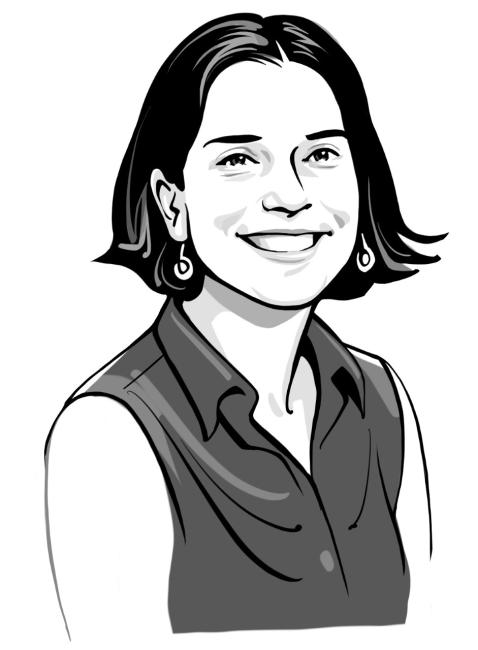August 2022: Handpicked
Each month, the Yiddish Book Center asks a member of our staff or a special friend to select favorite stories, books, interviews, or articles from our online collections. This month, we’re excited to share with you picks by Sonia Bloom.

Sonia Bloom is the 2021–22 Yiddish Education and Translation Initiatives fellow at the Yiddish Book Center. She graduated from Oberlin College in 2018 with majors in comparative literature, Hispanic studies, and Latin American studies and has since worked as a museum educator, language tutor, and translator in New York and Buenos Aires. A kindershule graduate and longtime Kinderlander from Brooklyn, Sonia grew up around yidishkayt but did not start formally studying the language until 2019 at the YIVO-Weinreich Summer Program. She then continued her language studies at the New York Workers Circle, Argentina’s IWO, and the Yiddish Book Center’s Steiner Program.
“Six Lines” in Seven Translations: The Craft of Translating Yiddish Poetry
What does it mean to read “in translation”? By showcasing seven different English renderings of Aaron Zeitlin’s short poem “zeks shures” (“Six Lines”), this program, one of the Center’s earliest virtual public programs during the pandemic, brings us up close to the many considerations at hand in the practice of translation.
One of my favorite parts of working at the Center has been browsing the stacks for historical educational materials and easy reading practice for students. This primer, published by the Book League of the Jewish People’s Fraternal Order in 1944, gently introduces Yiddish basics with plenty of English, illustrations, and bite-size exercises.
Kadia Molodowsky Reads Her Work
It can be hard to come by accessible audio of native Yiddish speakers. The Center's Frances Brandt Online Yiddish Audio Library holds over 750 remastered recordings of events at the Jewish Public Library of Montreal. In addition to providing an invaluable resource for Yiddish learners and researchers, it is quite moving to hear the voices of the Yiddish authors whose books fill the Center.
Der hoyf on fentster by Mimi Pinzón
I recently learned that a hoyf (courtyard) appears as a frequent setting in Yiddish literature—specifically referring to an internal courtyard, the outdoor space enclosed by multiple buildings. And the hoyf in this novel is central to our young main character Etl’s observations of life as an immigrant in Argentina. Herself a translator of Spanish to Yiddish (of authors such as Jorge Luis Borges!), Mimi Pinzón is one of very few known Yiddish writers to have been educated entirely in Latin America. Der hoyf on fentster, published in 1965, is her most famous work and will be translated by Jonah Lubin, one of our incoming 2022–23 translation fellows.
Dr. Claire Solomon was my advisor at Oberlin, and her Great Jewish Books lecture for the Center is a perfect example of her approach to study that I admire so much. She expertly weaves contextual analysis with close readings to give us compelling commentary on history, violence, and world literature.
Q&A
Tell us about your selections and what they say about your relationship with Yiddish language and culture.
Looking back at my selections, I am realizing there is an accidental theme of childhood permeating the more overt translation theme (after all, it is Women in Translation month!) that I had based my initial picks around. This is not surprising considering my interest in the way language learning and literary translation interact—there is something to be said for childlike curiosity and humility in both of these practices! I have always been interested in the forces that shape what gets translated, when, and why. There is a painful assumption that translation is a necessary evil for the survival of Yiddish literature and culture, but I think that translation (both reading it and doing it) can actually offer a different entry point and inspiration for playful language learning. This is part of the multilingual legacy of Yiddish that I want to see continue.
What are you working on next?
I am excited to share that I will be staying on at the Center as the Yiddish education specialist for the coming year, continuing to work on language pedagogy programming and materials. The new Yiddish textbook In eynem (White Goat Press) has been out for two years now, and this year we have a new cohort of Yiddish educators from around the world participating in the Center's Yiddish Pedagogy Fellowship, a yearlong program that will train them in the communicative approach to language teaching. The demand for Yiddish classes has skyrocketed during the pandemic, and I’m grateful to be part of a growing professional community interested in how to best teach and encourage language learning.
